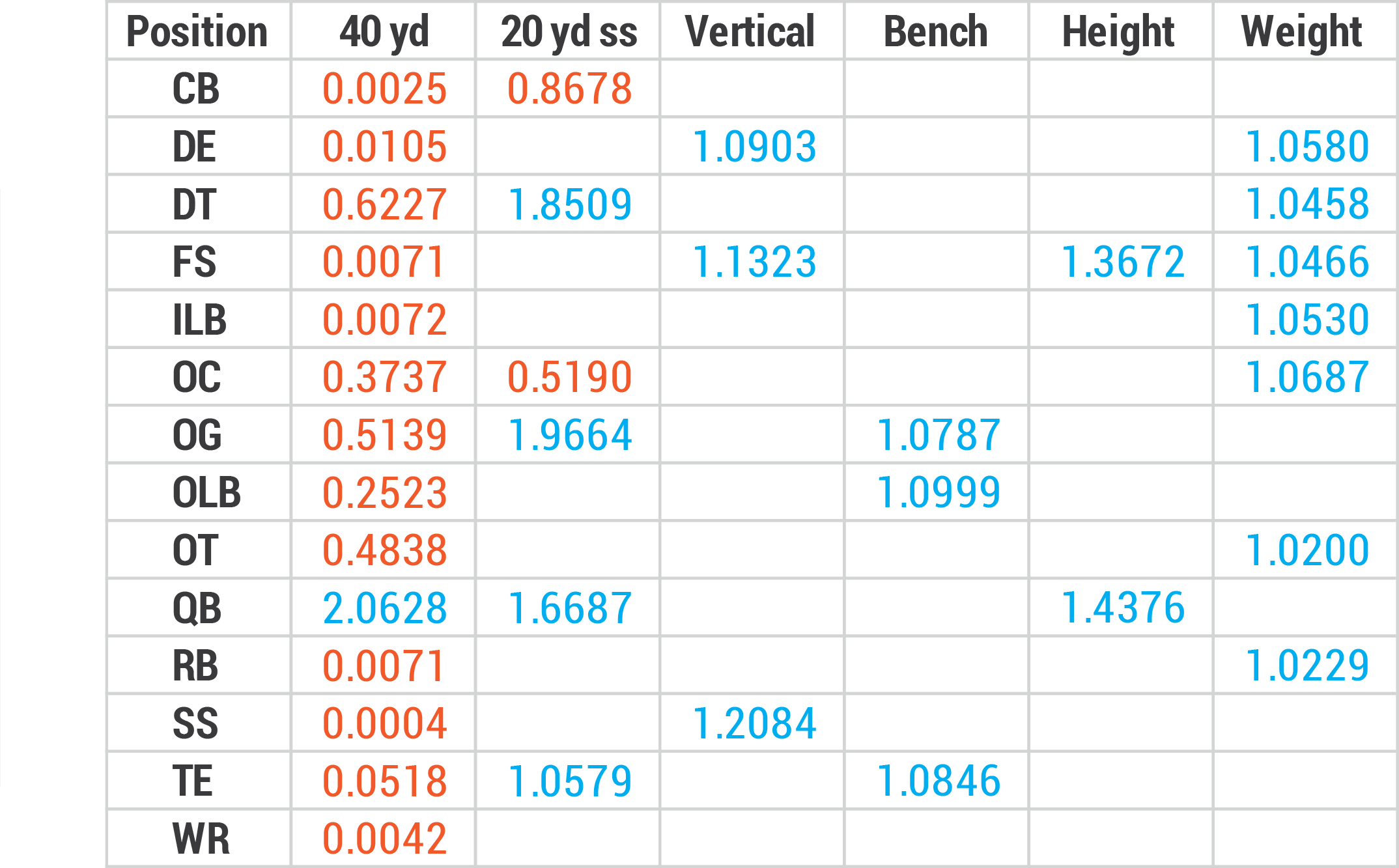NFL Combine Data Pt. 2
misc ?? Comments 31/Mar/2016 ThuAnother quick look at combine data...
While physical attributes alone are not strong predictors of NFL success, they play a significant role in the drafting process. Combine tests provide a standardized way for teams to compare prospects. Each test measures a specific football-related athletic trait; the 40 yard dash is a measure of straight line speed, the 20 yard short-shuttle measures change-of-direction speed, the 3-cone drill tests agility, and the vertical and broad jumps are tests of vertical and horizontal explosiveness.
It stands to reason that certain tests are more relevant to some positions than others. For example, the vertical jump is much more closely related to the job of a cornerback as opposed to that of a defensive tackle. To understand how combine measurables are related to the likelihood of being a player being drafted, I developed binary logistic regression models for each position using combine data from 1999-2014. The results of the models are presented in the table below (due to limited data, 3-cone drill times were excluded).

The table lists odds ratios for significant variables in each model, which can be used to compare the effect of each test on the likelihood of being drafted. For instance, vertical jump has an odds ratio of 1.09 for defensive ends, indicating that each additional inch is associated with a 9% greater likelihood of being drafted. Similarly, 40 yard dash has an odds ratio of 0.25 for outside linebackers, meaning that each additional tenth of a second results in a player being 4 times less likely to be drafted (1/0.25). Note that the units for the 40 yard dash and 20 yard short shuttle were converted to tenths of a second.
Some notable findings:
-The 40 yard dash appears to be the most important combine test. Faster times were associated with significantly higher odds of being drafted for every position except quarterback. 40 yard times were particularly strong predictors of draft likelihood for defensive backfield positions (CB, FS, SS).
-The relationship between the 20 yard short shuttle and likelihood of being drafted was the opposite of what was expected for DTs, OGs, QBs, and TEs. For these positions, a higher draft likelihood was associated with a slower shuttle time.
-The bench press was a predictor of draft likelihood only for blocking positions (offensive linemen and tight ends). These findings make sense given that blocking ability is dependent upon upper body strength.
-Unsurprisingly, height was a strong predictor of draft likelihood for quarterbacks. Height was also significant for free safeties, with each additional inch associated with a 37% higher likelihood of being drafted.
I hope to continue analyzing this combine data when I get the chance (things are a little crazy right now). Next I hope to develop more advanced models of draft position and player performance.
Tags: